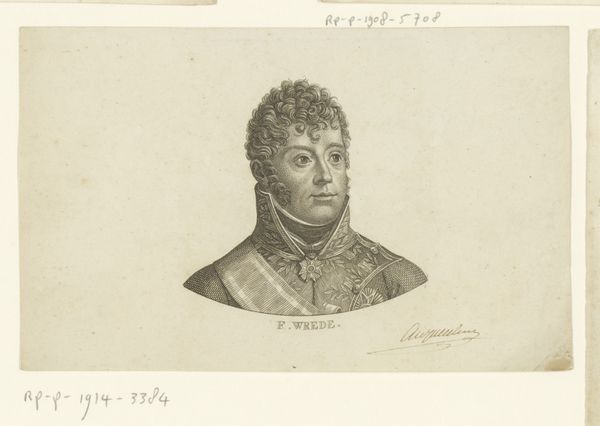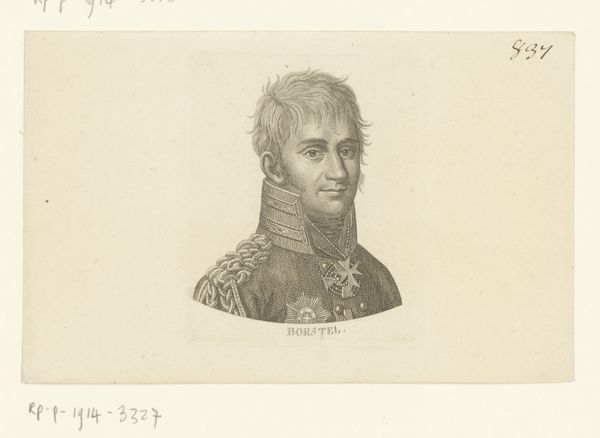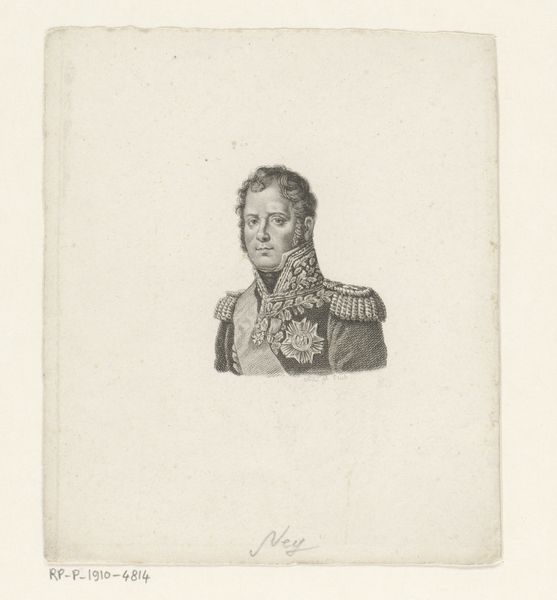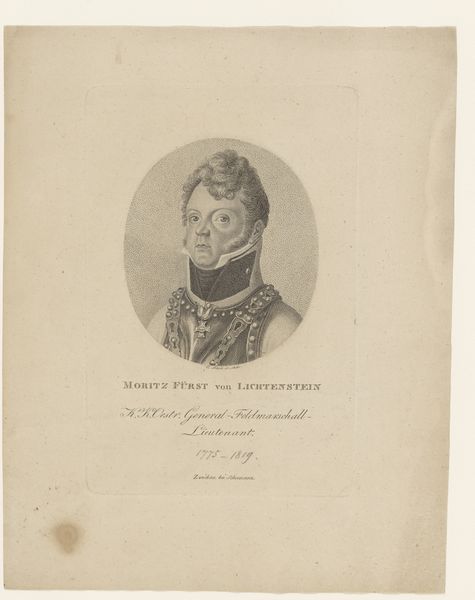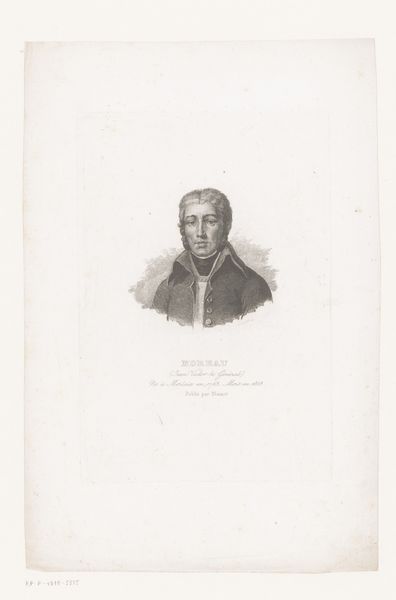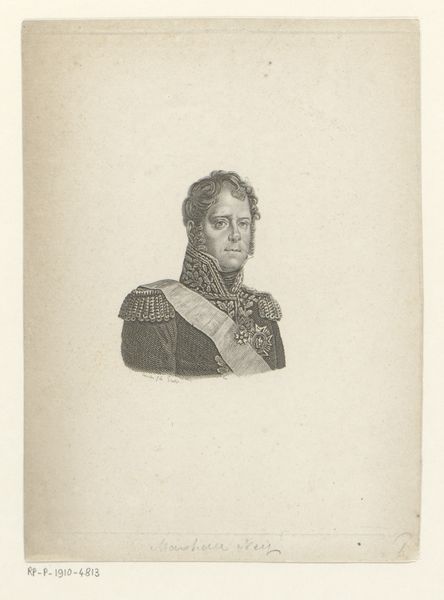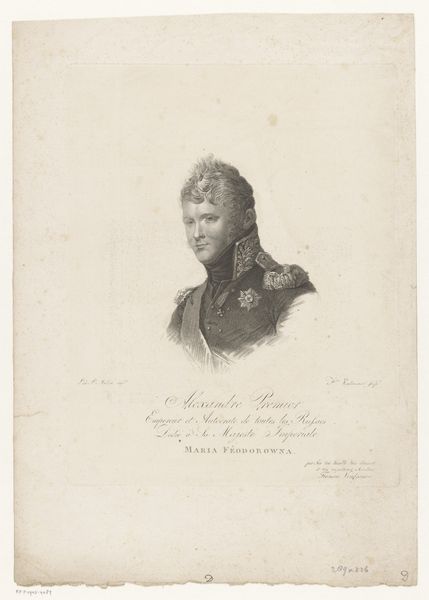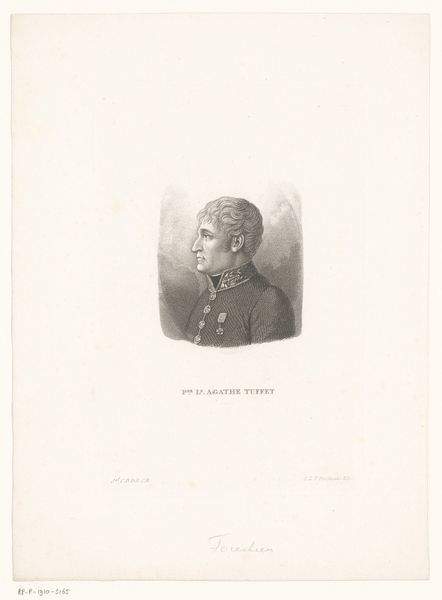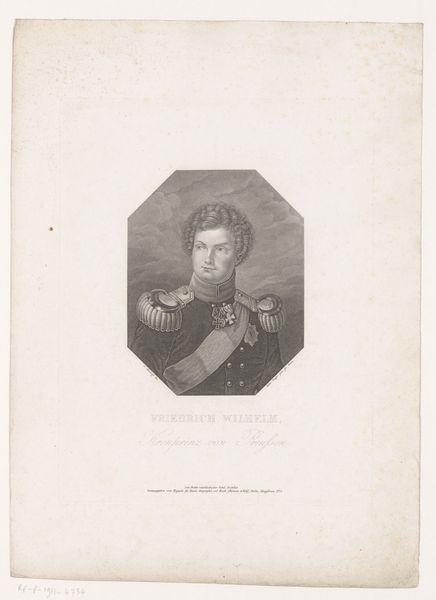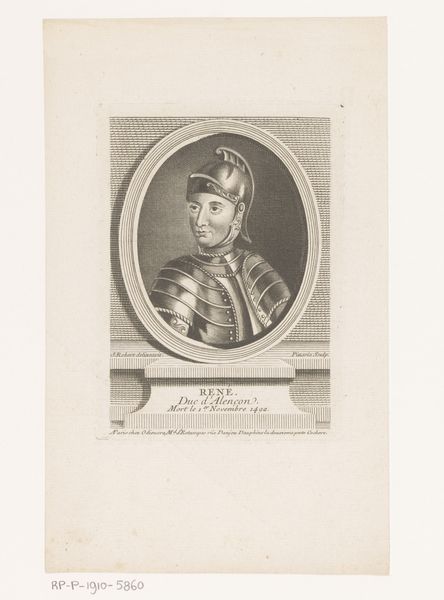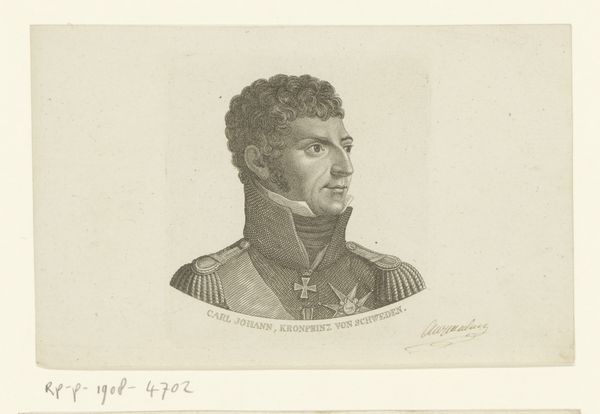
drawing, print, pencil, engraving
#
portrait
#
drawing
#
neoclacissism
# print
#
pencil drawing
#
pencil
#
engraving
Dimensions: height 79 mm, width 73 mm
Copyright: Rijks Museum: Open Domain
Curator: Looking at this engraving, I'm immediately struck by its rigid formality—he practically exudes stoicism! It's like a monument in paper. Editor: That makes sense, doesn't it? What we have here is a portrait of Frederick William III, King of Prussia, dating anywhere between 1797 and 1840. The artist, Ernst Ludwig Riepenhausen, employed both pencil and engraving techniques to bring this image to life. The mechanical processes involved underscore how image-making could become industrialized during that era. Curator: Industrialized portraiture, interesting concept! I guess it does sort of drain the soul, doesn't it? Though you can see the attention to detail. It's not sloppy work, just... cold. Look at how crisply the uniform’s braiding has been rendered and how meticulously they've detailed his medals. Editor: Exactly! Think about the division of labor necessary. An engraver isn't just someone expressing themselves; they’re translating an image, possibly from another source. The pencil sketch is crucial. Also, it is interesting to consider paper-making processes for prints such as this one during the era and the origins of such material. Curator: You're right, there's a reproduction element that changes the whole intention. It's not about capturing the king’s soul; it’s about mass-producing his image. To project power. Editor: And to circulate it, of course. It brings visibility, or rather controlled visibility. What’s seen, and how. How fascinating to examine the king's public persona constructed through carefully controlled dissemination of his image in printed form and his ability to control raw material. Curator: So, a portrait of a king as much a crafted object than a unique, felt expression. The materials become political. I suppose that alters how we "see" him. A kind of early PR stunt made of pencil, ink and paper. Editor: Precisely. By acknowledging materiality, this makes this portrait less about Frederick William III’s essence and all about the complex means through which he projected authority. Curator: It suddenly adds such a new layer, thinking of what this actually *is*. And maybe strips the man of some power by showcasing that construction so blatantly. Food for thought! Editor: Absolutely. Analyzing materials encourages reflection, it forces us to investigate who benefits and suffers within systems of production, visibility and power.
Comments
No comments
Be the first to comment and join the conversation on the ultimate creative platform.
